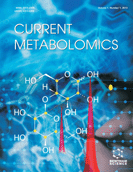Abstract
Background: Hyperlipidemia has been highlighted to be one of the most prominent global health threats. Poria cocos (PC), a well-known traditional Chinese medicine, is used for treating hyperlipidemia in China. To evaluate its therapeutic function on hyperlipidemia, urinary metabolomics was performed.
Method: Diet-induced hyperlipidemic rat model was produced by high fat food, and then the ethanol extract of PC (250 mg/kg) was used to treat hyperlipidemic rats for 6 weeks. Urine samples were analysed using ultra performance liquid chromatographyhigh definition mass spectrometry coupled with partial least squares-discriminant analysis. Box plots, fold changes, one-way analysis of variance, Mann-Whitney U-test, false discovery rate correction, heatmap display and receiver operating characteristic analysis were employed for further analysis of the identified metabolites. Additionally, visualization of metabolic pathways was conducted by ingenuity pathway analysis and Metscape.
Results: Eighteen metabolites were identified including propionylcarnitine, arginine, trimethyltridecanoic acid, methylhippuric acid, aminoadipic acid, citric acid, etc. The metabolites arginine, aminoadipic acid and citric acid were screened as significant biomarkers by various statistical analysis and receiver operating characteristic curves. The results of quantitative enrichment analysis algorithm and cytoscape indicated that thirty-eight metabolic pathways were perturbed by diet-induced hyperlipidemia. The abnormal levels of these metabolites in model group indicated diet-induced hyperlipidemia mainly disturbed amino acid metabolism, tricarboxylic acid cycle, fatty acid metabolism and nucleic acid metabolism. However, PC partially ameliorated these abnormal metabolisms.
Conclusion: PC positively regulated the perturbed metabolisms induced by hyperlipidemia and metabolomics was proven to be suitable for characterizing antihyperlipidemic effect of PC.
Keywords: Hyperlipidemia, Poria cocos, metabolomics, biomarker, ultra-performance liquid chromatography, high definition mass spectrometry.
 67
67 4
4

















